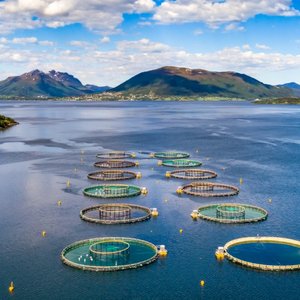China’s animal protein market has seen consumption trends evolve due to cyclical and structural factors, including market oversupply, economic slowdown, demographic shifts, and changing consumer values. According to a recent RaboResearch report, these new trends present both opportunities and risks for the industry. Companies need to strategize for long-term consumer market changes and get ready to meet the sophisticated demands of modern Chinese consumers.
The era of supplying homogenous products to meet basic needs is over
Gone are the days of one-size-fits-all products in China’s animal protein market. “Today’s consumers expect more than just a product; they seek a comprehensive value proposition that includes good service and valued experiences,” explained Chenjun Pan, senior analyst – Animal Protein for RaboResearch. This shift is a result of China’s remarkable economic growth, market liberalization, and digitalization, which have all contributed to per capita meat consumption doubling from 35kg in the mid-1990s to 72kg in 2023.
Animal protein consumption remains resilient
While China’s economy transitions and income growth moderates, the resilience of animal protein consumption is evident. Consumers may be tightening their belts in other areas, but their expenditure on food remains firm. The focus has shifted from quantity to quality. “How to eat well instead of how to eat more has now become the focus of many Chinese consumers,” Pan said.
Demographic changes are reshaping preferences
China’s aging population and smaller household sizes are leading to a nuanced impact on animal protein consumption. “The market is gradually moving away from pork, traditionally the dominant choice, toward poultry, beef, and seafood, which are favored for their perceived health benefits,” said Pan. “Additionally, the older generation’s adoption of e-commerce, food delivery, and convenience foods marks the end of past consumption behaviors.”
Four key trends influencing the future
According to RaboResearch, the future of China’s animal protein consumption is shaped by four notable trends:
- Value for money: Consumers are increasingly seeking products that offer the best value for their money.
- Experience economy: There is a growing preference for spending on services over goods, reflecting a desire for valued experiences.
- Health and nutrition: Investment in health and nutrition is on the rise, influencing purchasing decisions.
- Evolving distribution channels: The continuous evolution of distribution channels is changing how consumers access animal protein products.
Implications for animal protein supply chains
To capitalize on these trends, animal protein companies must pivot from a volume-centric to a consumer-centric approach. This involves focusing on:
- Value growth: Companies should prioritize value over volume, with an emphasis on poultry, beef, and high-value seafood.
- Downstream extension: Closer integration with food service and retailers will help companies secure margins and meet consumer needs more effectively.
- Sustainability: As consumer awareness of sustainability grows, animal protein supply chains have the opportunity to strengthen partnerships with retailers and food service by enhancing sustainability efforts.
- Standardization: The trend toward standardized food processing and preparation opens new avenues for supply chain innovation.
“These changes in China’s animal protein market present a unique set of challenges and opportunities. Companies that adapt to these new consumption trends with agility and consumer focus are set to thrive in this dynamic environment,” concluded Pan.










